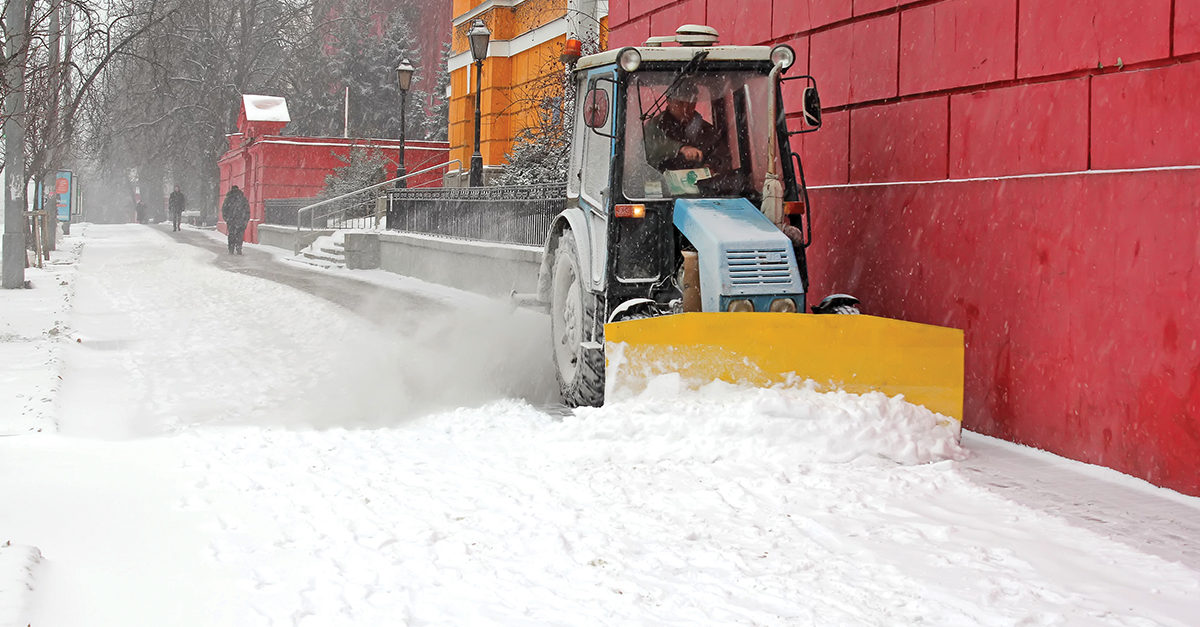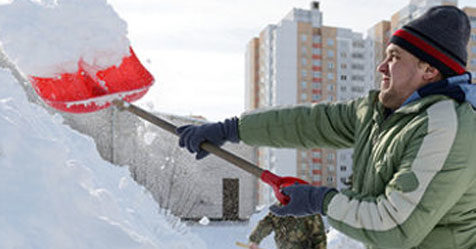Maintaining proper aesthetics of a commercial property is critical to attracting tenants, increasing employee satisfaction, and even determining profit. However, despite investing a tremendous amount of effort in their properties’ interiors, landscaping, colors, and design, property managers often overlook the importance of aesthetics from a maintenance perspective. Most notably, snow and ice management are rarely considered and certainly have the potential to negatively impact a commercial property’s image.
The Message Behind Safety
First and foremost, the perceived safety of a property plays a major role in the impression it leaves on all users. If snow piles are blocking visibility for cars that need to pull in or out of drive lanes, or if the snow piles are so high that they lead to widespread icing (from melting during warm temperatures in the day and then freezing at night), they can compromise the safety of the lot and shed a negative light on the property.
Allowing ice to accumulate throughout a parking lot sends the message that property managers don’t care enough to protect the safety of the employees, tenants, or customers that use the facility. It is no different than allowing a personal safety hazard in the form of poorly maintained asphalt or concrete, which will create the potential for slips, trips, and falls.
Look no further than Maslow’s Hierarchy of Needs, the fundamental psychology theory of human motivation, to determine how important safety is to all people—only physiological needs are more important. Maslow’s theory states the only needs that are more important to people than safety are those basic physical requirements for human survival, such as air, water, food, clothing, and shelter.
Property Aesthetics
In addition to causing unsafe conditions, poor snow pile location can actually affect the aesthetics of a property year-round. When custodial or exterior maintenance staff pile snow on top of landscaping, it can take months for the grass, shrubs, trees, and decorative plants to grow back.
Snow piles on landscaping cause damage in three main ways:
- The weight of snow piles can literally crush a plant, breaking its branches and structure to a point that regrowth is not possible.
- Alternatively, de-icing chemicals used in the parking lot may alter the soil content so much that plants are no longer able to get the nutrients and water they need to survive.
- Finally, turf grass is subject to suffer “snow mold,” a particular fungus that can grow when heavy, deep snow cover (like a snow pile) prevents the ground from freezing.
By not piling snow on top of landscaping, it’s possible to mitigate all three types of damage. Otherwise, it may take significant financial investment to restore a property to its former state.
Proper Snow Placement
The best option for snow placement is next to (but not covering) drainage on a property. Always place snow in an area as far away from the main traffic patterns as possible and on a paved area to promote drainage and prevent landscaping damage. This will minimize property damage, melt and refreeze situations, and help maintain good traffic flow throughout the winter.
Creating a Plan
The best option for creating a snow site engineering plan is to consult with a certified snow professional. A list can be found on the Snow and Ice Management Association’s (SIMA) website atwww.sima.org. Further, SIMA has published a best practices checklist that includes key components of a snow and ice management plan. A free download of the checklist is available on its website and will help walk facility managers through all best practices, including clear marking of handicapped zones, fire exits, hydrants, and drains as well as proper drainage and lines of sight for snow pile considerations.
Product Selection
The average slip-and-fall claim costs nearly US$20,000 and the safety of a property in winter months should not be taken lightly. Therefore, de-icing material choice is significant. One of the biggest mistakes that property managers make when choosing material is selecting any type of traction control product.
Whether sand, dirt, cinders, or a proprietary product, these materials do nothing to mitigate icy conditions; instead, they create the appearance of a messy and unkempt property. The most common alternatives to traction control products include rock salt (NaCl), calcium chloride, magnesium chloride, calcium magnesium acetate, potassium acetate, or a blend of these products. Environmental limitations, product availability, cost, and typical winter temperatures will help guide de-icer selection.
Another problem with all traction control products is that they make snow piles dirty. While snow piles are nothing glamorous to admire in parking lots, a lot that is clean and managed neatly is at least better than one that looks like dirt.
Further, using these products will destroy seal coating, line striping, interior floors, landscaping beds, and drainage infrastructure. Property managers are then left with a choice: Invest significantly in exterior maintenance costs or suffer poor curb appeal. In fact, many property managers find they are able to save a considerable amount of money in their operating budgets by switching from a traction control product to a true de-icer.
Equipment Maintenance
Equipment should be clean, free of leaks, and stored in a location that is the least impactful to the end users of a property. The same goes for any material storage that will occur at the site.
Poorly maintained equipment sends the message that the property manager doesn’t take pride in the image of the property. This can be a significant drawback for the end-users of the property who are concerned about the facility’s overall image.
Additionally, poorly-placed equipment can block sightlines to cross-traffic, causing a traffic flow problem and potential safety hazards. Similarly, it can obstruct store signage, and as a result, lower traffic counts for retail locations.
To properly store equipment, place all bulk materials in a bin covered with a nonpermeable tarp. This will create the cleanest look for a property and will protect both the drainage infrastructure and the environment. If there is small equipment that needs to be stored, consider renting a proper container to keep everything hidden from view and protected from the elements.
Let it Snow
As with most elements of property maintenance, the key to success is proper planning. With some forethought and follow through, proper winter maintenance can help a property stand out from the competition while protecting the investments made in the other three seasons. While most will consider snow a four-letter-word, those who have a proper plan will have no concerns saying, “Let it snow!”



